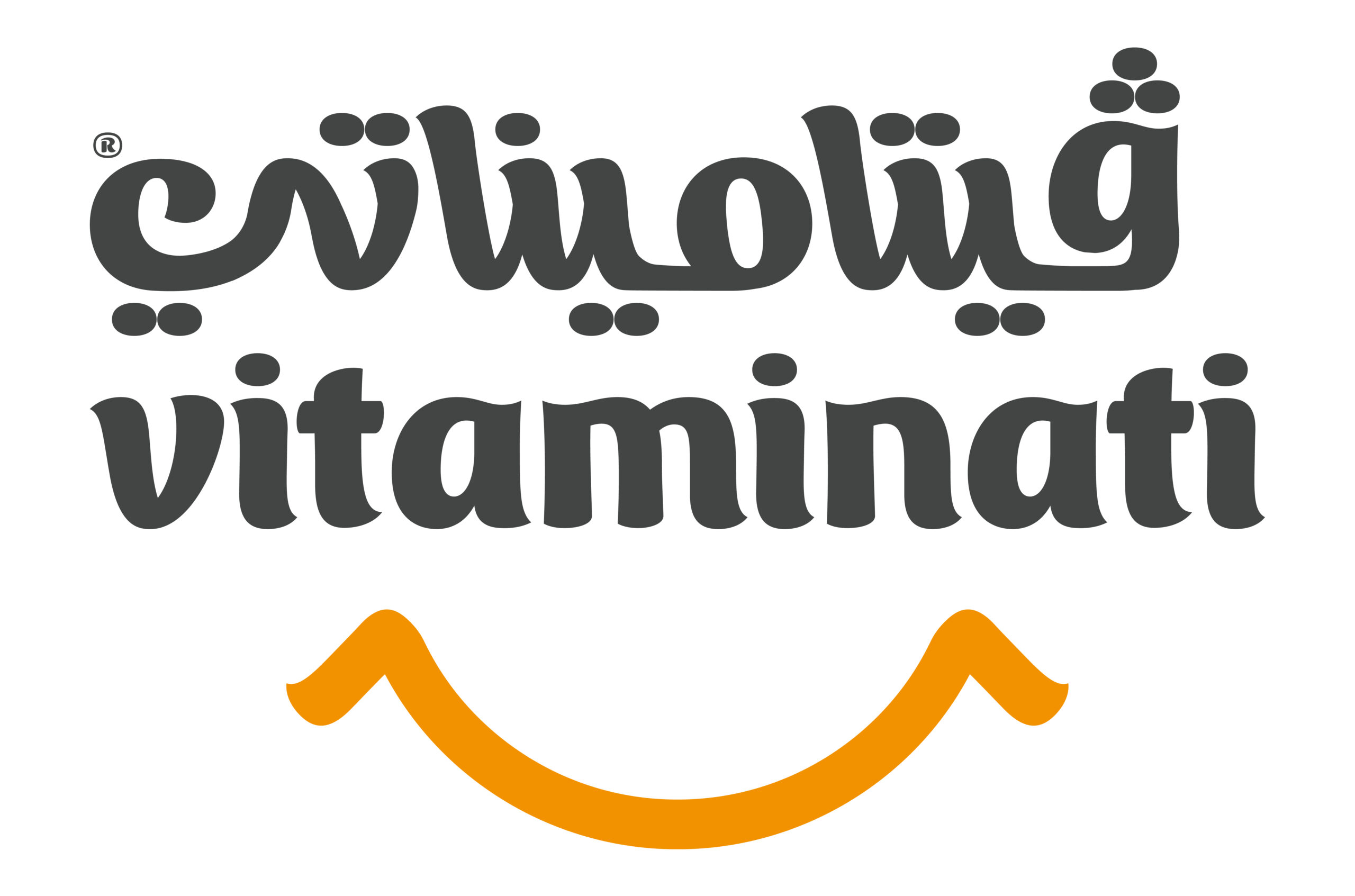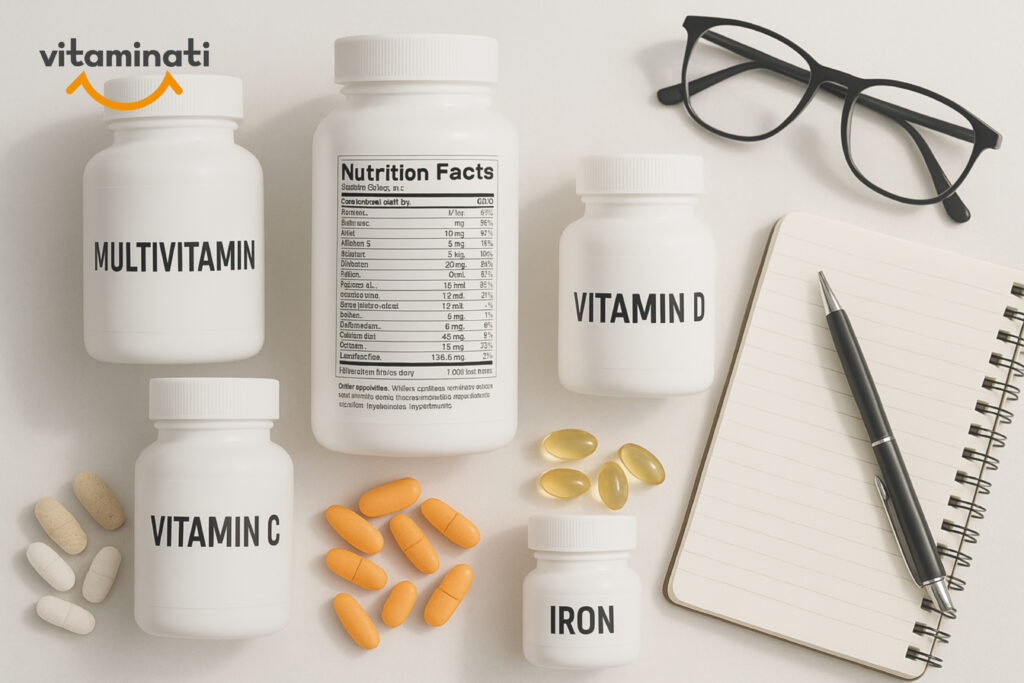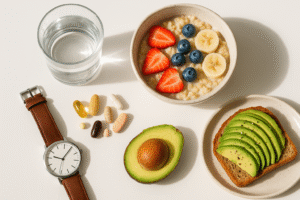Table of Contents
ToggleWhy Is Reading Vitamin Nutrition Labels Important?
Reading the nutrition labels on vitamin products is not a minor detail—it is the first essential step toward understanding what you are putting into your body. According to reports from the World Health Organization (WHO), more than 40% of adults worldwide take dietary supplements regularly, yet most do not understand the symbols or percentages listed on the packaging. This lack of knowledge can lead to overconsumption or the intake of unsuitable ingredients.
Reading vitamin labels helps you determine the quality of the product, the appropriate dosage, and the presence of additional ingredients that may negatively affect your health, such as sugars or artificial coloring. With this knowledge, consumers become more aware and make their choices based on science rather than marketing. Therefore, reading labels is an essential skill for anyone who aims to maintain their health with awareness and responsibility.
Key Elements in Reading Vitamin and Supplement Labels:
1. Vitamin Name and Type:
The first thing to pay attention to is the vitamin’s name and chemical form. For example, Vitamin B9 may appear as Folic Acid or Folate, while Vitamin E may be natural (d-alpha-tocopherol) or synthetic (dl-alpha-tocopherol). According to the National Institutes of Health (NIH), natural forms are absorbed 25–30% more efficiently than synthetic ones. Therefore, it’s essential to read the chemical name to determine which form is more effective and suitable for your body.
What Are Vitamins and Why Does the Body Need Them?
2. Recommended Daily Allowance (RDA) and How to Understand Daily Vitamin Dosages:
The RDA refers to the amount your body needs to stay healthy and prevent deficiency. In supplements, you may notice doses far exceeding this amount. For example, the RDA for Vitamin C is 90 mg for men and 75 mg for women, yet many supplements contain 1000 mg or more per dose.
According to WHO reports, overconsumption of certain vitamins can cause serious side effects, such as kidney issues or acid reflux. Therefore, it is important to read the dosage carefully and compare it with the recommended values. Ideally, choose a product that provides around 100% of the daily value, but not excessively more than that.
3. Percentage of Daily Value (%DV): What Does %DV Mean on Labels?
The %DV symbol stands for Percentage of Daily Value, indicating how much of your total daily vitamin requirement the supplement provides. For instance, if the label states 100% DV for Vitamin D, it means one serving covers your full daily need.
The NIH recommends interpreting %DV as follows:
-
Less than 5% = Low amount
-
10–20% = Moderate amount
-
Over 20% = High amount
Using %DV allows you to easily compare products and determine whether the dosage is appropriate or excessive.
And what happens if you don’t get enough vitamins?
Vitamin deficiencies can lead to a variety of symptoms—so what are they?
4. Vitamin Form (Natural or Synthetic)
The chemical form of a vitamin determines how well it’s absorbed and utilized by the body. For example, Vitamin D comes in two main forms: D2 (Ergocalciferol), plant-based and less absorbable, and D3 (Cholecalciferol), animal-based and about 70% more absorbable.
Similarly, Vitamin B12 in its natural form (Methylcobalamin) is more effective than the synthetic form (Cyanocobalamin). When reading labels, always check which form of the vitamin is used to ensure optimal absorption and benefit.
Is there a specific way to classify vitamins?
5. Additional Ingredients in Supplements and Their Effect on Quality:
Most supplements contain non-active ingredients such as preservatives, artificial colors, or sweeteners. These additives can lower product quality and cause side effects for some people. The WHO advises avoiding supplements with added sugars or artificial colorants such as FD&C Colors, especially for individuals with allergies or diabetes.
Ingredients are listed from highest to lowest concentration. If the vitamin itself appears near the end of the list, it’s present in smaller amounts. Look for phrases like “No Artificial Colors” or “Sugar-Free” to ensure product purity.
6. How to Identify Vitamin Supplement Quality from the Label?
Consumers can verify quality through several clear indicators on the label. The most important is the GMP (Good Manufacturing Practice) seal, which shows the product was made under strict hygiene and quality standards. Registration with the U.S. Food and Drug Administration (FDA) is another strong sign of credibility. ISO 9001 certification also indicates a consistent quality management system.
Always check production and expiry dates, as some vitamins like B and C lose potency over time. The NIH advises buying supplements that display a batch number, since its absence may indicate poor manufacturing oversight.
7. Warnings and Overdose Risks When Reading Vitamin Labels:
Vitamins aren’t always harmless—some can be dangerous at high doses. For example:
-
Vitamin A exceeding 10,000 IU/day may cause liver damage.
-
Vitamin D above 4000 IU/day for long periods can lead to excess calcium levels in the blood, affecting the heart and kidneys.
-
Iron in high doses can be extremely toxic to children.
Always read the warnings printed on the label to identify who should or shouldn’t use the supplement—such as pregnant women, children, or heart patients. Avoid taking multiple supplements with the same vitamin to prevent double dosing. The Office of Dietary Supplements (ODS) recommends consulting a healthcare professional before adding any new supplement to your routine.
Practical Examples: How to Read Vitamin C and D Labels.
For Vitamin C, if a label lists 500 mg per dose and 555% of the daily value, that means the dose is far above the daily requirement (90 mg). While Vitamin C is relatively safe, excessive intake can cause digestive issues like diarrhea.
For Vitamin D, a supplement with 1000 IU (25 µg) providing 125% DV, certified by GMP and FDA, indicates a safe and reliable daily supplement. The best form is D3 (Cholecalciferol) due to superior absorption.
How to Choose a Safe and Effective Supplement?
Choosing a supplement should never be a quick decision. Before purchasing, ensure the product bears recognized quality certifications (GMP, USP), lists clear ingredient sources, and identifies the manufacturer. Avoid those that make exaggerated claims like “Cures all diseases” or “Boosts immunity 100%,” as they are often unregulated.
Organizations such as NIH and WHO recommend consulting a healthcare provider before starting any supplement, especially for people with chronic conditions or those taking medication, as some vitamins may interact with drugs.
FAQs:
-
What does %DV mean on nutrition labels?
It indicates how much of your daily vitamin requirement the product provides. -
How can I tell if a vitamin is natural or synthetic?
Check the chemical name—forms beginning with “dl-” are usually synthetic, while “d-” alone indicates a natural form. -
Are all dietary supplements safe?
Not necessarily. Ensure the product carries certifications like GMP or FDA approval. -
Why are GMP and FDA certifications important?
They confirm that the product was manufactured according to strict quality and safety standards. -
How do I read production and expiration dates?
Look for “MFG” (manufacture date) and “EXP” (expiration date) and avoid near-expiry products. -
What’s the correct way to choose a safe supplement?
Read labels carefully, understand the dosage, check certifications, and consult your doctor. -
What role do vitamins play in boosting immunity?
Vitamins such as C, D, and Zinc are essential for supporting immune function and protecting the body from infections. -
How are vitamins absorbed in the body?
Water-soluble vitamins (like B and C) are absorbed quickly and excreted easily, while fat-soluble vitamins (A, D, E, K) are stored in body fat and absorbed with dietary fats.
Conclusion: The Conscious Consumer Chooses What’s Best for Their Health.
Understanding how to read vitamin nutrition labels is the key to making informed, healthy decisions. Every detail—from dosage to additional ingredients—carries meaning about the product’s quality and safety. Never let marketing decide your health; instead, rely on scientific knowledge and credible sources.
A smart consumer doesn’t buy the most expensive supplement but the safest and most transparent one. Reading labels isn’t a luxury—it’s a form of self-protection and a smart investment in your body. For accurate, science-based information, consult reliable resources such as the NIH Office of Dietary Supplements and the World Health Organization (WHO), which provide updated guidance on the safe and effective use of vitamins and supplements.
PharmD with expertise in pharmaceuticals and a passion for making medical knowledge clear, accurate and accessible to all








